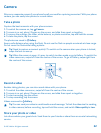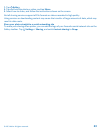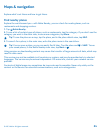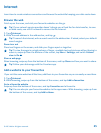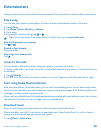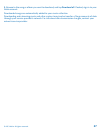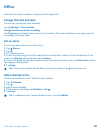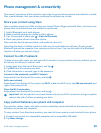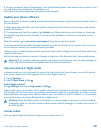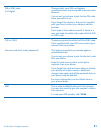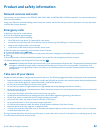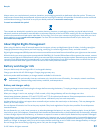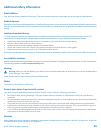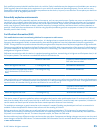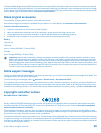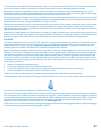
Only qualified personnel should install the device in a vehicle. Faulty installation may be dangerous and invalidate your warranty.
Check regularly that all wireless device equipment in your vehicle is mounted and operating properly. Do not store or carry
flammable or explosive materials in the same compartment as the device, its parts, or accessories. Do not place your device or
accessories in the air bag deployment area.
Potentially explosive environments
Switch your device off in potentially explosive environments, such as near petrol pumps. Sparks may cause an explosion or fire
resulting in injury or death. Note restrictions in areas with fuel; chemical plants; or where blasting operations are in progress.
Areas with a potentially explosive environment may not be clearly marked. These usually are areas where you are advised to
switch your engine off, below deck on boats, chemical transfer or storage facilities, and where the air contains chemicals or
particles. Check with the manufacturers of vehicles using liquefied petroleum gas (such as propane or butane) if this device can
be safely used in their vicinity.
Certification information (SAR)
This mobile device meets international guidelines for exposure to radio waves.
Your mobile device is a radio transmitter and receiver. It is designed not to exceed the limits for exposure to radio waves (radio
frequency electromagnetic fields), recommended by international guidelines from the independent scientific organization
ICNIRP. These guidelines incorporate substantial safety margins assure the protection of all persons regardless of age and health.
The exposure guidelines are based on the Specific Absorption Rate (SAR), which is an expression of the amount of radio frequency
(RF) power deposited in the head or body when the device is transmitting. The ICNIRP SAR limit for mobile devices is 2.0 W/kg
averaged over 10 grams of tissue.
SAR tests are carried out with the device in standard operating positions, transmitting at its highest certified power level, in all
its frequency bands. The maximum recorded SAR values for this device are:
Maximum SAR value Frequency bands used when Maximum
SAR value was recorded
When held against the head 1.43 W/kg over 10g WCDMA2100+WLAN2450
When operated at a separation distance
of 1.5 centimetres (5/8 inch) from the
body
0.64 W/kg over 10g WCDMA900+WLAN2450
Your mobile device is also designed to meet the requirements for exposure to radio waves established by the India Department
of Telecommunications. These requirements set a SAR limit of 1.6 W/kg averaged over one gram of tissue. The highest SAR value
reported under this standard during product certification for use at the ear is:
Maximum SAR value Frequency bands used when Maximum
SAR value was recorded
When held against the head 1.52 W/kg over 1g WCDMA2100+WLAN2450
This device meets RF exposure guidelines when used against the head or when positioned at least 1.5 centimetres (5/8 inch)
away from the body. When a carry case, belt clip or other form of device holder is used for body-worn operation, it should not
contain metal and should provide at least the above stated separation distance from the body.
To send data or messages, a good connection to the network is needed. Sending may be delayed until such a connection is
available. Follow the separation distance instructions until the sending is finished.
During general use, the SAR values are usually well below the values stated above. This is because, for purposes of system
efficiency and to minimise interference on the network, the operating power of your mobile is automatically decreased when
full power is not needed for the call. The lower the power output, the lower the SAR value.
Device models may have different versions and more than one value. Component and design changes may occur over time and
some changes could affect SAR values. The latest available SAR information for this and other Nokia device models can be found
at www.nokia.com/sar.
© 2013 Nokia. All rights reserved.
35



